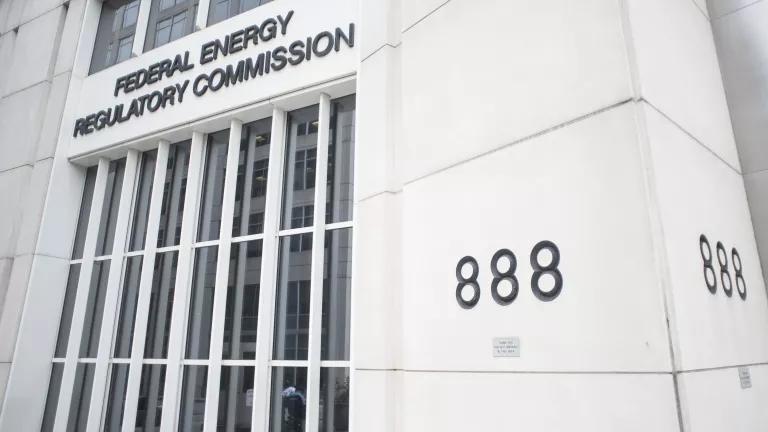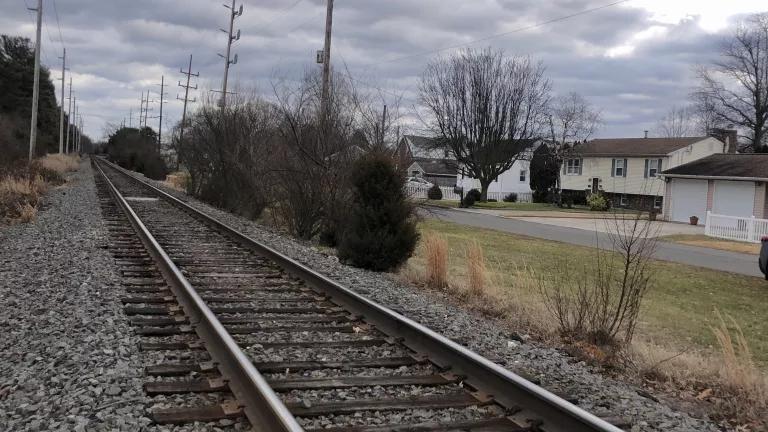Hidden Hazards: Oversight Voids in Gas Gathering Lines
PHMSA lacks complete information on gathering line routes and operating status. Recent accidents confirm these pipelines pose unknown hazards beneath our feet.

The Trans-Alaska Pipeline System with 800 miles of pipeline infrastructure.
Pixabay
NRDC has followed the inadequate oversight of “gathering lines” for a long time, starting with our first blog on the topic back in 2011. Throughout the years, the fracking boom has led to a proliferation of unregulated gathering lines that are growing in diameter, pressure, and length, increasing their chances to turn into deadly hazards.
Strict standards and regulations are needed to hold companies accountable for their pipeline systems both during and after operation. Currently, we are at risk of seeing more accidents and environmental harms from this extensive network of infrastructure that is not formally mapped or tracked by state or federal regulators. This blog focuses on abandoned and active gathering lines, the former of which are gathering lines with known responsible parties that are no longer operating to transport oil or gas. The lack of oversight standards on both abandoned and active gathering lines is leading to a growing number of orphaned gathering lines, which are lines of any operating status that have no known responsible party.
In the U.S., gathering lines tend to be in rural areas, and have been at the root of fatalities in these communities. One recent incident was in 2018, in Stanton, Texas, where a gathering line buried yards away from a family’s home leaked unprocessed natural gas into their home, causing it to erupt into flames after one of the parents opened the clothes dryer. Delaney Tercero, the family’s three-year-old daughter, unfortunately passed away from her injuries following the explosion. After an investigation into the tragic incident, it was revealed the 10-inch diameter gathering line belonged to Targa Resources Corporation. Ultimately, the company faced no penalties from the event; because of a complete lack of regulations, the company had technically broken no rules in its failure to either notify the homeowners of the existence of the pipeline or its failure to notice and fix the leak. When asked to file an accident report following the explosion, Targa opted out because there was nothing requiring them to do so.
It’s important to understand how gathering pipelines are connected to the greater oil and gas transportation system to demonstrate why proper regulation and standards should be in place. In short, companies build gathering pipelines to transport gas and crude oil between well pads (where the fuels are extracted from the ground) and central collection points like processing facilities and storage tanks.

Gathering pipeline systems.
GAO
Like other pipelines, gathering lines can be found over or under water and land. Although these pipelines are necessary for the oil and gas transport system’s function, most are not regulated and lack any decommissioning guidelines once the wells they connect to stop producing or the processing or storage plants they feed into go out of business.
The primary agency responsible for oversight of gathering pipelines is the Department of Transportation’s Pipeline & Hazardous Materials Safety Administration (PHMSA). In addition, any other agencies that have jurisdiction over the land the pipeline crosses, like the Bureau of Land Management (BLM) and the Fish & Wildlife Service (FWS), might have some regulatory authority. PHMSA estimates at least 425,000 onshore gas gathering pipelines have not been subject to regulation by the agency. Like other types of pipelines, gathering lines can deteriorate, break, and leak hazardous contents into the environment around them, signaling the obvious need for stricter and more proactive oversight.

Examples of gathering lines and associated infrastructure.
GAO (left); USFWS (middle and right)
As gathering lines have increased in number, so has their proximity to inhabited areas, leading to growing concerns over the risk of more frequent leakages, explosions, and environmental harms. Additionally, a 2021 study found gas gathering and transmission lines in the U.S. are often concentrated in counties with economically disadvantaged and highly vulnerable communities unable to face the greatest hardships in the event of an accident.
The U.S. Government Accountability Office (GAO) released two related reports in 2012 and 2024 calling for increased data collection on the location, status, and number of accidents related to onshore oil and gas gathering lines. Both reports identified the following gaps in oversight and recordkeeping for onshore oil and gas gathering lines:
- State regulatory agencies lack construction quality and current integrity records for gathering pipelines without PHMSA oversight, hindering accident prevention;
- State and local safety agencies don’t have any or accurate records about the locations and lengths of unregulated gathering lines, even if individual operators may have this information; and
- Unused gathering lines without a decommissioning plan could pose several “safety and environmental risks, including spills, emissions, and explosions.”
- Federal agencies like the BLM and U.S. Forest Service collectively oversee 39,000 gathering lines rights-of-way, but neither agency tracks operating status or exact routes
- Federal agencies like the BLM and U.S. Forest Service lack gathering line decommissioning standards, especially in terms of timing
With growing concerns about gathering lines continuing to be a blind spot for agency standards, PHMSA released a final rule in 2021, strengthening regulations applicable to onshore gas gathering lines above standard diameters and located near communities. This rule appears to be in response to several recommendations by GAO from their 2012 report and public comments. The rule includes the following improvements and regulations:
- Better distinguishes between categories of gas gathering pipelines to discern between those of greater concern (higher pressure, wider diameter, proximity to residential buildings)
- Adds two gas gathering pipeline types to impose stricter oversight on larger, more dangerous gathering lines:
- Type R lines, with a diameter 8.625 inches or below, require annual reporting and immediate notice of certain incidents, but are still considered “unregulated”
- Type C lines have a diameter of 8.625 inches or greater, or may be non-metallic, operating above pressures of 125 pounds per square inch. Type C lines now require “design, installation, construction, and initial inspection and testing,” corrosion control, damage prevention, emergency plans, public awareness, line markers and leakage surveys as newly regulated pipelines
- The largest gathering lines, 16 inches and above or those near a residential area, will be under regulation and include overground markers
- This rule also requires companies to share geocoding information about the paths of larger gathering lines to the National Pipeline Mapping System
Despite these improvements by PHMSA to regulate a greater number of gathering lines, PHMSA’s approach to enhancing its oversight has been done in a piecemeal fashion. Thus, the agency is in the final stages of promulgating a subsequent rule covering gas gathering line leak detection and repair. When and if it enters into force, this newest rule includes the following improvements:
- An Advanced Leak Protection Program performance standard for gathering lines regulated under Part 192 of the Code of Federal Regulations (CFR), which sets minimum federal safety standards for transporting natural gas and other gasses by pipelines
- Requirements that operators grade and repair all Part 192-regulated gas lines, not just those posing public safety concerns
- Codification of a congressional requirement for operators of gas pipelines to implement written procedures to eliminate hazardous leaks, minimize releases of gas, and remediate or replace pipelines known to leak
- Incorporate explicit reference to environmental harm among the “hazards” addressed in certain parts of the applicable hazardous pipeline regulations.
Despite this newer rule adding important oversight tools to PHMSA’s regulation of gas gathering lines, PHMSA’s rulemaking dashboard is a reminder that there is still more work needed from the agency: an additional rule covering idled gas gathering lines that was supposed to be complete by 2022 remains in the “notice of proposed rulemaking” stages of development. With the upcoming 2024 election, the eventual fate of both the leak detection and repair rule that is near completion and the planned idled line rule is now up in the air.
Assuming they enter into force, the hope is that these new PHMSA rules will kickstart a trend toward increased recordkeeping on the design and operating status of gas gathering lines while also ensuring that operational oversight is leading to detection and repair of hazards that could pose a serious risk to human life and general public health. And while these regulatory changes are critical, there is still a pressing need for all relevant agencies to move quickly to ensure that all types of fossil fuel gathering lines become fully regulated. Doing so will ensure that avoidable accidents like the one that tragically befell the Tercero family are avoided or prevented and the health and environmental risks posed by leaks and fugitive emissions are detected, located, and quickly stopped.




